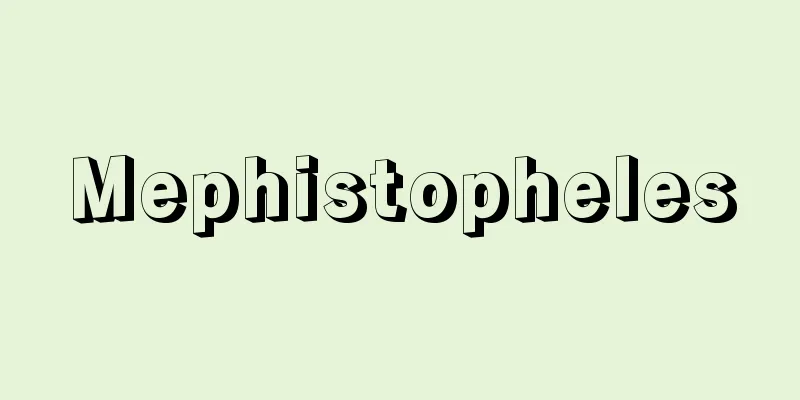Kumaso

|
The name of an ancient region in southern Kyushu, or the name of a tribe that lived in that region. It is also written as Kumaso or Kumaho. In the Kojiki, it is written as Kumaso, and in the section on the creation of the Oyashima Province, Tsukushi Island (Kyushu) is divided into four provinces, including Tsukushi Province, Toyokuni, Hi Province, and Kumaso Province, so it is thought to refer to the areas of Hyuga, Osumi, and Satsuma, that is, the areas roughly equivalent to the present-day Miyazaki and Kagoshima prefectures. In the Nihon Shoki, it is written as Kumaso, and in the Chronicles of Keiko, Chuai, Jingu, and others, it appears as the name of a tribe that was defeated. Furthermore, in the Fudoki of the Saikaido (Kyushu), it is written as Kumaho. Based on the spelling of Kumaso, it is thought that Kumaso is a place name combining the areas of Kuma District, Higo Province, and Soo District, Osumi Province, and corresponds to the area of present-day Kuma District and Hitoyoshi City in southern Kumamoto Prefecture, and northeastern Kagoshima Prefecture. However, this idea is questionable, as there are almost no other examples of combining multiple place names into one region name in ancient times. As is known from the story of Yamato Takeru's (Yamato Takeru/Yamato Takeru no Mikoto) subjugation, Kumaso has always been anti-Yamato government, so it would be best to see it as a general term for the unsubjugated groups in southern Kyushu. It is also appropriate to consider "so" as the root, and "kuma" as an adjective meaning brave or rebel. According to the Gishiwajinden, there was a country called Kuna, which was in conflict with Queen Himiko, and there is also a theory that this Kuna was the Kumaso. The Kumaso name disappears from the Kojiki and Nihonshoki after the reign of Emperor Ojin, and in the section on Emperor Richu, Hayato people appear as residents of the same southern Kyushu region, and generally show a subservient attitude to the Yamato government. Considering this, it is possible to understand the Hayato as the successor to the Kumaso. [Akira Nakamura] "Kumaso and Hayato" by Nakamura Meizo (1973, Hyoronsha) [Reference] |Source: Shogakukan Encyclopedia Nipponica About Encyclopedia Nipponica Information | Legend |
|
古代の南部九州の地域名、あるいはその地域の居住者の族名。熊曽、球磨贈於などとも書く。『古事記』では熊曽と書き、大八島(洲)(おおやしま)国生成の条で筑紫(つくし)島(九州)を筑紫国、豊(とよ)国、肥(ひ)国、熊曽国など四つに区分しているところから、日向(ひゅうが)、大隅(おおすみ)、薩摩(さつま)の地域、すなわち現在のほぼ宮崎・鹿児島両県の地域をさしたものとみられる。また『日本書紀』では熊襲と書き、景行(けいこう)、仲哀(ちゅうあい)、神功(じんぐう)などの各紀に、討伐を受けた族名としてみえる。さらに西海道(九州)の各「風土記(ふどき)」などには球磨贈於などとも表記されている。 この球磨贈於の表記からすると、クマソは肥後国球磨(くま)郡と大隅国贈於(そお)郡の地域をあわせた地名で、現在の熊本県南部の球磨郡・人吉(ひとよし)市、鹿児島県北東部の一帯にあたるとも考えられている。しかしながら、古代においては複数の地名をあわせて一つの地域名とする例がほかにはほとんどみられないことからすると、この考え方には疑問もある。クマソは、ヤマトタケル(日本武尊・倭建命)による討伐物語で知られているように、つねに反大和(やまと)政権的存在であったことからすると、南部九州の未服属集団の総称とみるのがよいであろう。また「ソ」がその語幹で、「クマ」は勇猛・逆賊の意の形容とするのが妥当ともいえる。『魏志倭人伝(ぎしわじんでん)』によると、女王卑弥呼(ひみこ)と対立した狗奴(くな)国があったことが知られるが、この狗奴国をクマソとする説もある。クマソは、応神(おうじん)朝以後には『古事記』『日本書紀』ともにその名がみえなくなることや、その後の履中(りちゅう)天皇の条などからは、同じ南部九州の居住民として隼人(はやと)が登場し、概して大和政権に服属的態度がみられることからすると、隼人はクマソの後身として理解することも可能である。 [中村明蔵] 『中村明蔵著『熊襲と隼人』(1973・評論社)』 [参照項目] |出典 小学館 日本大百科全書(ニッポニカ)日本大百科全書(ニッポニカ)について 情報 | 凡例 |
<<: Kumaso leader - Kumaso Takeru
>>: Cryptotympana facialis (Japanese name)
Recommend
Magnetic sorting - magnetic sorting
Also known as magnetic separation. A method of sep...
Buenos Aires (English spelling)
The capital of Argentina. The metropolitan area, w...
Sewage septic tank - septic tank
…The first septic tanks were installed in Japan a...
Spring God - Shunshin-kun
Prime minister of Chu in the late Warring States ...
Shinto Five Books
It is the fundamental scripture of Watarai Shinto...
Golestan (English spelling)
…the Treaty of Golestan (now Gülistan), Azerbaija...
Igishi - Master of the Arts
〘Noun〙 A teacher, one of the three teachers and se...
Torso - How
〘Noun〙① A general term for the body parts of verte...
Fujiwara no Yorinari - Fujiwara no Yorinari
Year of death: Unknown (Year of death unknown) Yea...
Mount Kunimi - Mount Kunimi
A mountain on the eastern edge of Kumamoto Prefec...
Mount Kaikoma
(Hokuto City, Yamanashi Prefecture; Ina City, Naga...
Saeki Imamishi - Saeki Imamishi
Year of death: Enryaku 9.10.3 (790.11.13) Year of ...
Financial Business Development Order
...Bank mergers were also forced out of the neces...
Seixas, C.de (English spelling) SeixasCde
…Evora was a religious center, and in the 16th ce...
Cisplatin
…In 1815, Brazil was elevated to a kingdom and pl...









